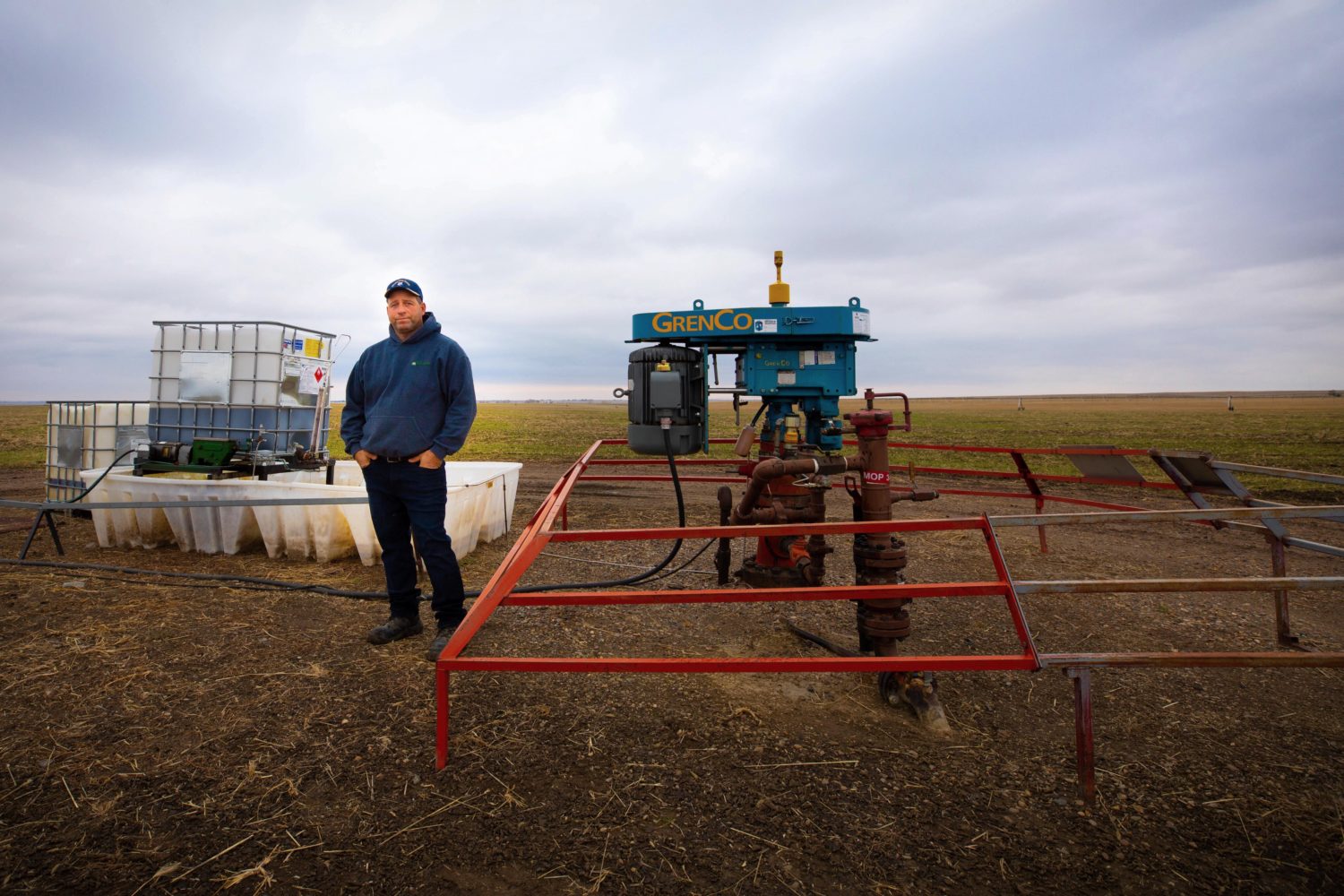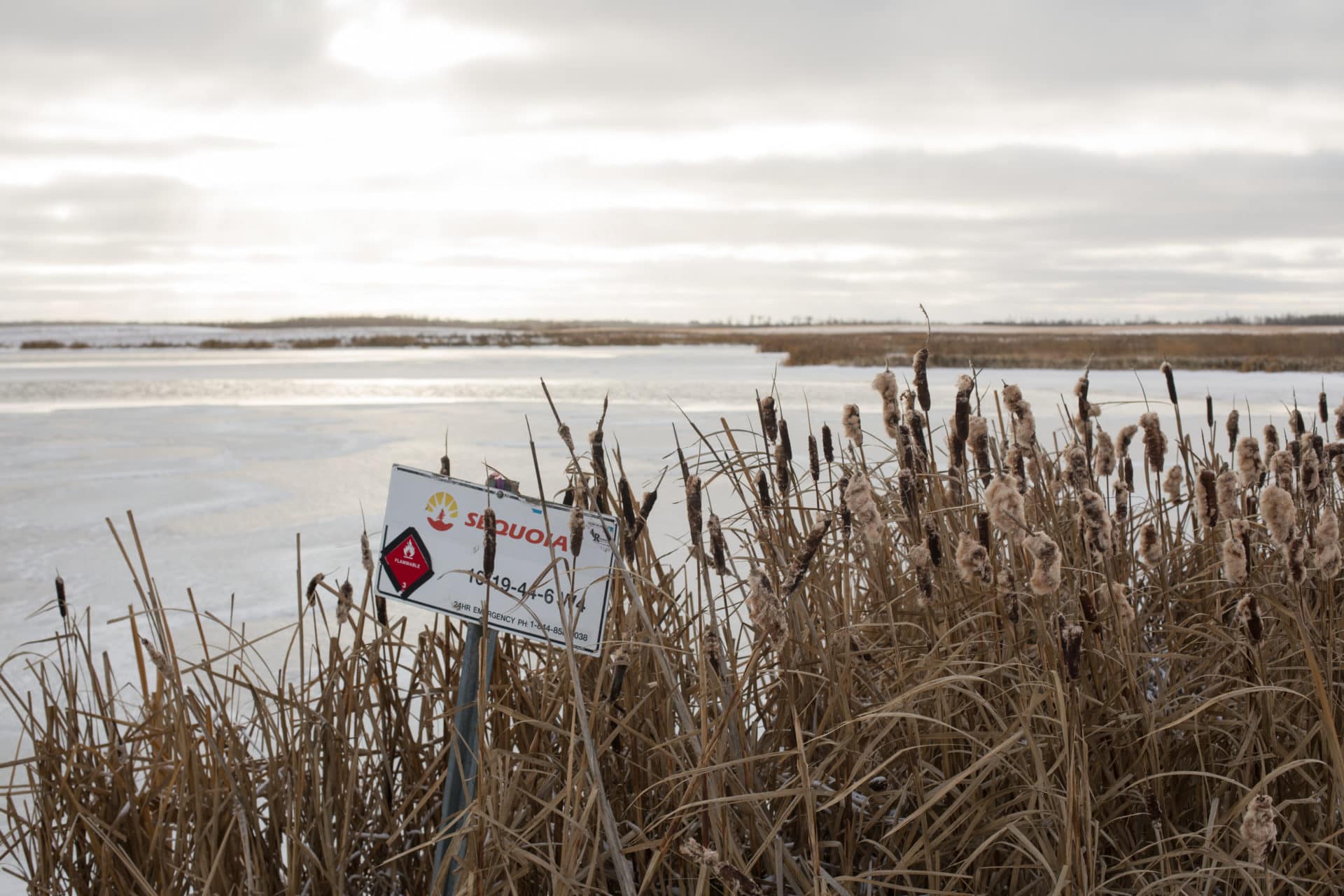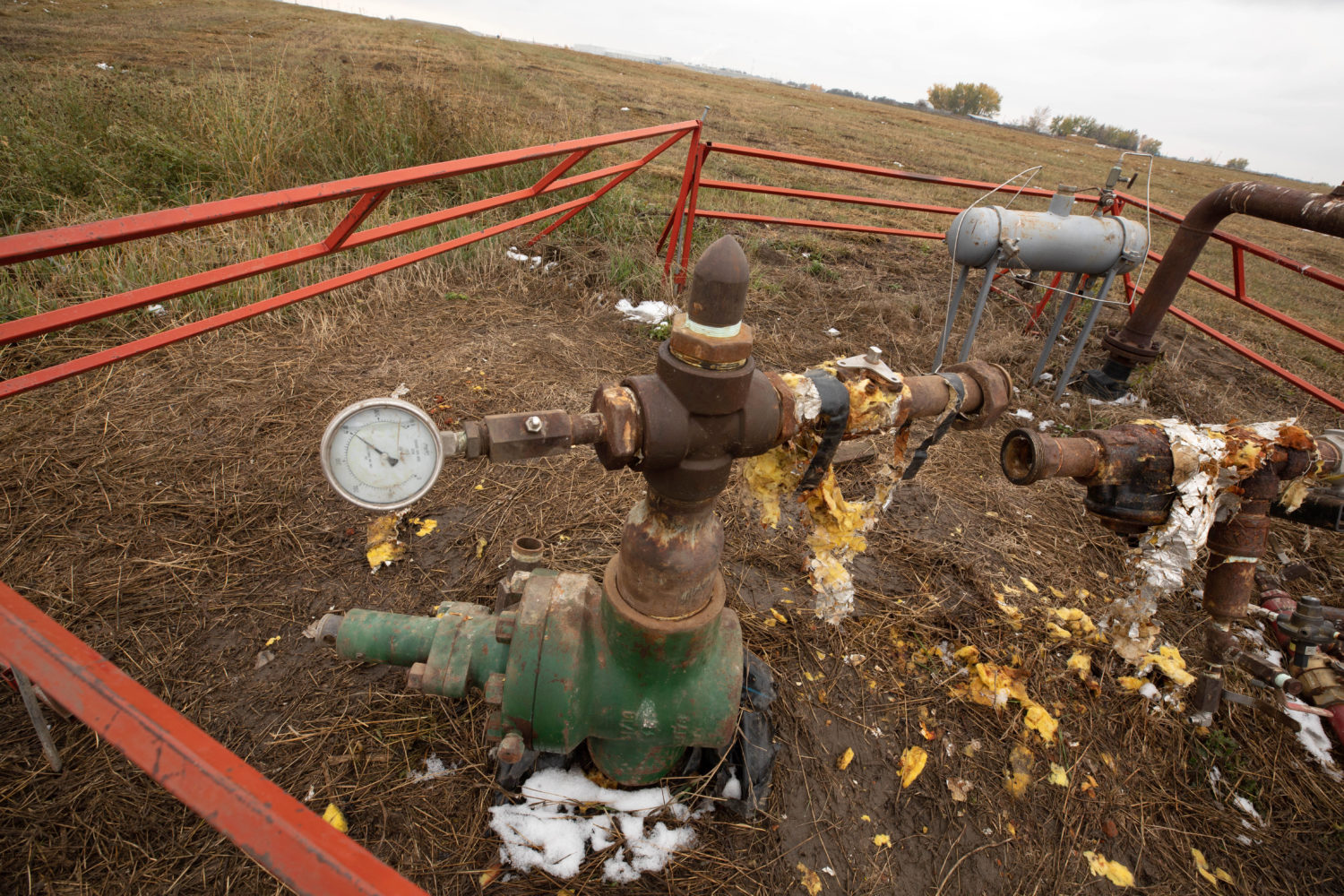
The site of an infamous B.C. mining disaster could get even bigger. This First Nation is going to court — and ‘won’t back down’
Xatśūll First Nation is challenging B.C.’s approval of Mount Polley mine’s tailings dam raising. Indigenous...
On Thursday, the Supreme Court handed down a long-awaited decision on the Redwater case, which has major implications for the cleanup of oil and gas wells across the country.
The case has often been regarded as a crucial test of the ‘polluter pays’ principle.
But how did the case come about? What does the decision really mean? And does this mean Albertans are in the clear when it comes to the billions of dollars in environmental liabilities associated with oil and gas wells in the province?
You have questions, we have answers. Read on!
This all started with an oil and gas company in Alberta, called Redwater Energy Corporation.
The company was founded in 2009, with headquarters in the small town of Okotoks, just south of Calgary. It was a small-ish operator — as far as oil and gas companies go — with dealings across western Canada. It owned 100 wells, pipelines and related facilities.
And then, in 2015, it went bankrupt.
When an oil and gas company goes belly-up, it leaves behind some assets. In this case, that included 17 producing wells. But it also leaves behind liabilities — money it owes to creditors and the cost of environmental cleanup of inactive wells.
When Redwater went bankrupt, its trustee argued that its creditors (such as the banks that lent it money) should collect what they were owed before any leftover funds were used to pay for environmental cleanup.
In essence, the trustee argued that cleaning up was the last priority when divvying up leftover funds.
Cue the Redwater case.
A lower court agreed with the trustee. Chaos ensued as people scrambled to cope with the idea that companies could walk away from the messes they make. The Orphan Well Association and the Alberta Energy Regulator appealed the lower court’s decision.
Eventually, the case headed to the Supreme Court.
The Supreme Court overturned the lower court’s decision, with a 5-2 majority.
Writing in a summary, the Supreme Court said Redwater’s trustee couldn’t walk away from cleanup costs — Redwater’s estate, so to speak, couldn’t just abandon its obligations to the public, to landowners and to the environment.

Farmer and Action Surface Rights chairman Ron Huvenaars stands beside active oil and gas infrastructure on his family farm. Increasingly, he’s worried that companies in Alberta aren’t taking into account the costs they’ll have to pay to clean up wells like this one when they reach the end of their productive life. Photo: Theresa Taylor / The Narwhal
According to the court, the money left over from Redwater’s assets must now be used to clean up the wells it left behind.
The Alberta Energy Regulator said it was “pleased.” Alberta’s Energy Minister, Margaret McCuaig-Boyd, called it “good news.” The Pembina Institute called it “reassuring.” Ecojustice called it a “win.” Greenpeace called it “a victory for the ‘polluter pays’ principle.”
There’s a caveat to some of the celebrating, though. As The Pembina Institute put it in a press release, “we aren’t out of the woods.” (More on that in a minute.)
The Alberta Energy Regulator was concerned about the implications for any future cleanup — and who would pay for it.
“If this decision is upheld by the Supreme Court of Canada, we — and every other regulator in Canada — will no longer be able to hold companies accountable for cleaning up their mess,” it wrote last February.
The decision wouldn’t just have implications in Alberta — but across the country, where other provinces are also dealing with a big backlog of wells to clean up, as well as the environmental liabilities of other industries, such as mining.
On top of that, people wondered what would stop companies from spinning off their less-profitable assets into separate companies, letting them go bankrupt and then walking away from the mess.
As Keith Wilson, a long-time lawyer working on behalf of landowners with wells on their land put it to The Narwhal last year, “If a restaurant could dump all of its garbage out the door and not pay anything, why wouldn’t it?”
Oil and gas companies aren’t restaurants, and their garbage is of a slightly, um, larger magnitude. The C.D. Howe Institute has estimated there are approximately 450,000 wells in Alberta — a well for every 1.4 square kilometres in the province.
And of those wells that are inactive in one way or another, one University of Calgary study pegged the time it would take to get everything cleaned up, using the current rate of spending, at 177 years.
Well, first and foremost, it takes dollar bills. Conventional wells can be thousands of metres deep.
Once the well is no longer producing, what’s left behind is probable soil and water contamination, a risk of explosion and a constant release of air pollutants, Jodi McNeill, a policy analyst with The Pembina Institute, told The Narwhal last fall. And then there are the emissions.
“When something hasn’t been plugged, it just continually releases greenhouse gases into the atmosphere,” McNeill told The Narwhal.
So once a well has had its moment, you might assume it would be cleaned up. Not so fast.

A flooded and inaccessible oil lease site owned by Sequoia in Wainwright, Alta. on Monday, November 5, 2018. Photo: Amber Bracken / The Narwhal
Alberta doesn’t currently have any time frames on when a well should be properly sealed and reclaimed, while many other oil-producing areas do — deadlines on sealing a well range from six months to 25 years in the United States, for example.
It’s also worth noting that even after environmental cleanup is all said and done — and a site has been issued an official reclamation certificate — there are serious concerns about whether that land will ever actually recover.
The Narwhal uncovered the Government of Alberta’s own research that documented issues with crop productivity and ecological health long after a site had been reclaimed.
This is but one reminder that Alberta is not free and clear when it comes to oil and gas liabilities, even now that the Supreme Court has made its decision on Redwater.
Well, funny you should ask.
You’d think that provincial regulators might be able to put a stop to this problem before it starts. You might wonder, ‘if a company can’t afford to pay for cleanup of the mess it makes, why should it be allowed to make the mess in the first place?’
As it turns out, the Alberta Energy Regulator has been giving out licences and allowing companies to drill for years, even if they don’t have enough money to pay for cleanup.
There is a system in place that is supposed to ensure that financially unstable companies get weeded out — or that they pay a deposit for cleanup if they can’t prove they have sufficient assets to take on new liabilities.
The trouble is, that system is woefully out of date.
The Narwhal’s investigation into this system last year found the regulator is still valuing oil at over $100/barrel — something Albertans are all too aware is no longer the case. And it’s underestimating the cost of cleanup, according to recent research from the University of Calgary.
As Wilson, the lawyer, put it to The Narwhal, it is, at best, a “rosy picture.”
And painting that rosy picture means the regulator has allowed many companies to continue to operate — and to expand those operations — without having nearly enough money to pay for cleanup. And the way the regulator looks at the books means many companies haven’t had to put down a deposit for cleanup, either.
In November, the regulator estimated total liabilities to be $58.65 billion.
According to the Pembina Institute, “only $1.2 billion is currently held in securities to protect the public.”
Mind the, erm, $57.45-billion gap.
The Orphan Well Association is funded by oil and gas companies, which must pay a deposit (based on those calculations we talked about before) before getting a licence. It also gets money in the form of grants and loans from taxpayers, both federally and provincially,
The association brought in $30 million from the orphan well levy in 2017 — this part comes from energy companies. But since 2009, the Alberta government has given the Orphan Well Association more than $30 million in grants and, in 2017, it moved to loan the organization $235 million. Last year, the federal government also announced it would allocate $30 million to efforts to clean up orphan wells in Alberta.
Lars DePauw, executive director of the Orphan Well Association, spoke to The Narwhal last year, after our article came out about Alberta’s well-liability problem. He told us industry has contributed $314 million to the association to date, noting “this is a substantial amount that companies have paid for other company’s missteps.”

An orphaned oil and gas well on private property near Taber, Alta. Photo: Theresa Tayler / The Narwhal
Currently, the association’s inventory includes more than 3,000 orphan wells that haven’t been properly sealed yet (sealing is, curiously, known in the industry as “abandoning,” leading to countless confusing headlines) and another 1,500 orphans that have been sealed but still need to be reclaimed.
As The Narwhal reported last fall, the association spent more than $30 million in total expenditures in 2017. And, in that same year, it reported sealing just 232 wells.
So, no, the Orphan Well Association probably isn’t equipped to deal with too many more orphans.
In a statement, the regulator acknowledged that improvements remain to be made. “[W]e must manage liability differently,” it wrote, “in order to continue protecting Albertans, our environment, and our province’s many responsible operators.”
The Pembina Institute appears to agree. “While the Supreme Court’s decision ensures bankrupt companies’ remaining assets first go to clean up, those assets are often insufficient to cover full costs,” it wrote.
That gets us back to the original problem: even if it’s been confirmed that the funds of bankrupt companies have to be used for cleanup — is that enough?
The regulator has long allowed financially precarious companies to operate and trade licences, so it’s no surprise that even after the Redwater decision, there’s still more work to do for the province to ensure the public isn’t left on the hook in the future.
Not yet out of the woods, indeed.
Get the inside scoop on The Narwhal’s environment and climate reporting by signing up for our free newsletter. When I visited my reserve, Moose Factory,...
Continue reading
Xatśūll First Nation is challenging B.C.’s approval of Mount Polley mine’s tailings dam raising. Indigenous...

As the top candidates for Canada’s next prime minister promise swift, major expansions of mining...

Financial regulators hit pause this week on a years-long effort to force corporations to be...

